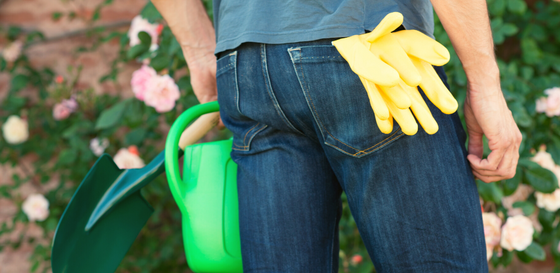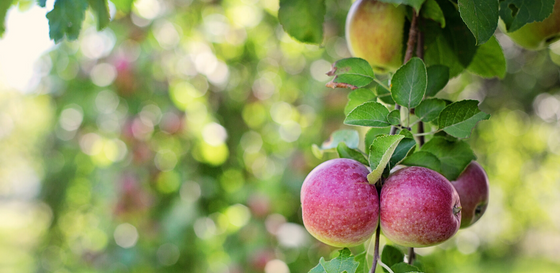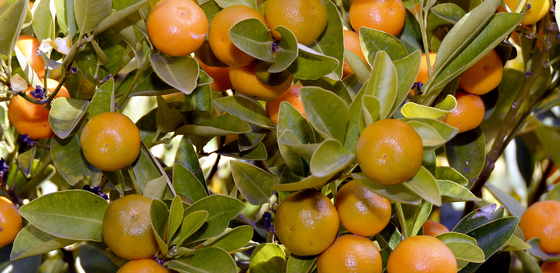
When we are feeling run down we are more susceptible to health issues. We usually take ailments to feel better. Whether it’s herbal tea, antibiotics or Grandmas’ secret recipe, we know what helps us to feel better, regain our strength and bounce back. Our garden isn’t too dissimilar to us.
The health of your plants is very important, and at times they can be looking a little on the down side and when they are not healthy, they are more likely to be attacked by pests and diseases.
Your soils contain many nutrients that your plants require, some are only necessary in small doses and others need to be constantly acquired by your plants to assist with their day to day living.
Most people have heard of NPK, but do you know what it represents and how it assists the health of your tree and how other elements benefit or harm your garden?

Image by globalnetacademy.ed.au
Nitrogen gives your plants the energy they require to produce fruit and grow. It also assists the chlorophyll molecules to make the leaves nice and green and it is a necessary food for photosynthesis. Nitrogen is absorbed best when the pH level of the soil is 6.0 and 7.5.
Stunted shoot growth, thin foliage cover and die back of twigs. Poor fruit set and fruit size. Older leaves appear pale green-yellow.
Thick skinned, large puffy fruit, vigorous vegetative growth, delayed maturity, percentage of juice and juice quality declines, shorter storage life and chance of re-greening.


Image by growabundant.com
Phosphorus assists with photosynthesis, respiration and cell division and aids in the storage of energy.
Phosphorus is absorbed best at pH 6.5-7.5.
Fewer flowers, misshapen fruit, open centres, thick coarse peels, pulpy fruit, lower juice and more acid. Old leaves are a dull bronzed green
Smaller fruit, higher percentage of juice, chance of re-greening and thinner peel.

Image by westcentalfs.com
Potassium helps with energy storage and assists with photosynthesis, respiration and cell division. Utilised for stress and disease resistance.
Potassium is best absorbed when pH is 6.0-10.0.
Small leaves, slower growth and heavy leaf fall. Severe deficiency causes heavy fruit and flower drop. Small smooth skinned fruit that colour early in the season, they also split easily and are more susceptible to albedo breakdown.
Carbon aids soil fertility. This can be increased using shredded newspaper or cardboard in the garden or by planting green manure or cover crops, like Lucerne and Alfalfa, as a mulch.

Image via pinterest.com
Boron helps cell division, seed development and to transport sugars through the plant.
Boron is best absorbed when pH is 5.0-6.8
Lopsided, malformed grey to brown fruit with gum pockets, stumpy roots, yellow veins on young leaves. Heavy fruit shedding.
Yellow dead leaf tips, leaf fall and die back and reduced yield.

Image by eplants.com
Calcium holds cell walls together
Calcium is best absorbed when pH is 6.7-7-4
Deformed leaf and shoot growth.

Image by growerssecret.com
Manganese assists with photosynthesis
Manganese is best absorbed when pH is 5.0-7.4
Young leaves are mottled pale green with inter-veinal yellowing. Reduces growth and a slight loss of yield

Image by greenwaybiotech.com
Magnesium is the photosynthesis powerhouse. Without Magnesium, chlorophyll cannot capture sunlight.
Magnesium is best absorbed when pH is 6.5-8.5.
Yellowing towards apex of leaves with a triangle area remaining green at the base in older leaves, can also cause defoliation (loss of leaves) and shoot dieback. Fruit are smaller and yield lowered.
None known.

Image via pinterest.com
Only small amounts of Zinc are needed. It is utilised by the plant for phytohormone metabolism- growth hormone production and internode elongation, which is when cells divide multiple times, this elongates the cell giving it thickness. It also helps with protein synthesis, stress tolerance and chlorophyll formation.
Zinc is best absorbed when pH is 5.0-7.0.
Leaves are generally narrow and small with creamy white to yellow blotches on young leaves. Terminal growth is retarded, tree vigour is reduced and small twigs or stems die. Poor fruit quality and lower yields.
Unknown.

Image via youtube.com
Iron gives the plant oxygen during chlorophyll production and helps with the green colouration.
Iron is best absorbed when pH is 4.0-6.8.
Stunted abnormal growth, young leaves are chlorotic and tips, veins and margins remain green the longest. Reduces plant yield and lowers vigour.

Image via pinterest.com
Molybdenum converts nitrate to nitrite and then to ammonia, this is then used to synthesis amino acids.
Molybdenum is best absorbed when pH is 8.8-10.0.
Similar to nitrogen deficiency, yellow spots on leaves in Spring.

Image via keys.lucindcental.org
Copper aids with tissue strength, stress tolerance, respiration and helps to metabolise carbohydrates and proteins, it is also necessary for photosynthesis.
Copper is best absorbed when pH is 5.0-7.0.
Peel may be brown with gum stained areas. Dark brown gum pockets on young shoots and shoot dieback. Fruit splitting is more likely.
Stunted roots and shoots.

Image via extensions.unh.edu
Suphur is similar to Nitrogen however it is only needed in small amounts.
Sulphur is best absorbed when pH is 6.0-10.0.
Young leaves are pale green/yellow with lighter veins and have stunted growth.

None known
Leaf burn, defoliation and dieback.
Comments will be approved before showing up.

A handy list of essential items to make your gardening journey easier! From simple things like gardening gloves right through to fruit tree netting and a pH soil test kit, these will really help set you up for success in your patch. Whether you plan to grow veggies, fruit trees or flowers, this list will give you the confidence to get out in the garden and make the most of it all!

Here are some tips to help you keep your Fruit Salad Tree at it's best throughout the year. We all get busy and sometimes the garden jobs get forgotten. We get it!
We've popped these tips and tricks into categories (eg Citrus or Apple or Stonefruit) and then into seasons (eg in autumn remember to do this or keep an eye out for this in summer, etc.) to make things as easy as possible.
Happy, healthy fruit trees grow more fruit and that will make everyone happy!

There are many ways that you can become more sustainable and growing your own beautiful fruit tree at home is a great way to start!
In this short video, Kerry shows her veggie garden and the different types of Fruit Salad Trees to compliment edible gardens big and small.